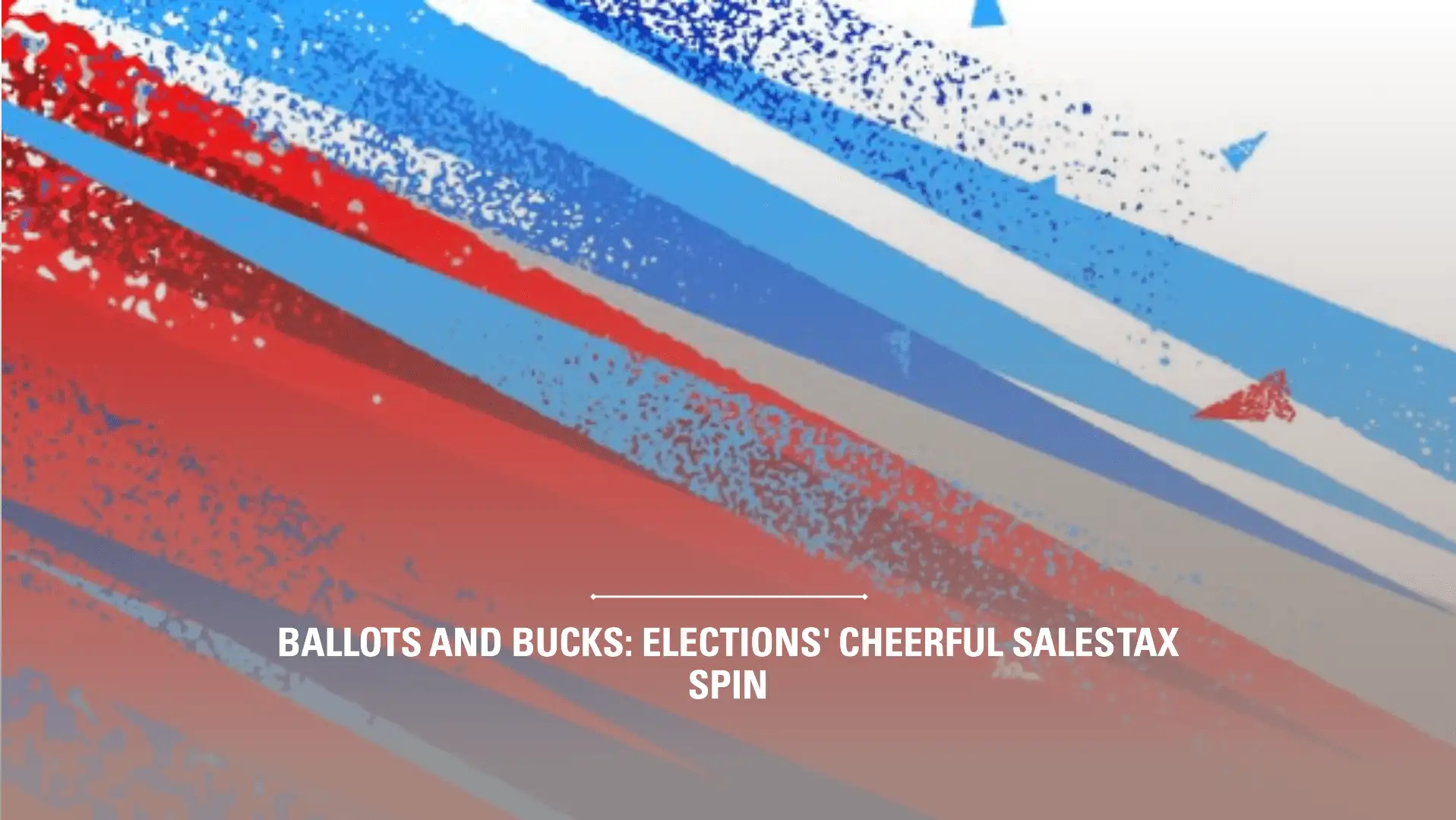Ballots and Bucks: Elections’ Cheerful Sales Tax Spin
Election season often conjures images of yard signs, spirited debates, and the exciting tick of the ballot box. Yet, hidden beneath the surface of this democratic display is a cheerful twist that impacts our wallets in unexpected ways. Welcome to the world where democracy meets the dollar—where your vote not only shapes policies but also gives a delightful boost to your local economy through sales tax revenue.
Democracy’s Dollar Dance: The Sales Tax Story Unfolds
Elections are more than just a cornerstone of democracy; they are also a catalyst for economic activity. When citizens head to the polls, they do much more than exercise their civic duty—they bring life to the local economy. The journey to the polling station often includes stops at local businesses, from purchasing a morning coffee to grabbing a quick snack, sparking a chain reaction of commerce. These small transactions, multiplied by the number of voters, contribute to an uptick in sales tax revenue.
Campaign seasons are bustling periods with candidates organizing rallies, speeches, and meet-and-greet sessions. These events are not just political spectacles but also economic powerhouses. Local venues are booked, catering services are hired, and promotional materials are printed, all of which inject money into the community. The resulting sales tax collected from these transactions finds its way back into public coffers, funding essential services and infrastructure.
Moreover, the very act of voting can indirectly stimulate economic activity. Think about the logistics behind setting up polling stations—renting spaces, purchasing voting machines, and employing temporary staff. All these activities generate sales tax through the purchase of goods and services, creating a ripple effect of economic benefits.
How Your Vote Boosts Bucks: Elections’ Cheerful Tax Twist
Your vote is not just a voice in the democratic process; it’s a cheerful contributor to the community’s fiscal health. On Election Day, the influx of voters translates into increased foot traffic for local businesses. From cafes to convenience stores, the heightened activity can lead to a surge in sales, and consequently, an increase in sales tax revenue. This revenue is then used to improve public amenities, benefitting the very voters who contributed to it.
Campaign paraphernalia also plays a significant role in this economic uplift. Buttons, banners, t-shirts, and signs are all part of the election landscape. The production and sale of these items contribute to local businesses and generate additional sales tax. Every yard sign purchased or campaign t-shirt worn is a small but meaningful boost to the local economy, turning political enthusiasm into tangible fiscal benefits.
Lastly, the excitement of elections often prompts people to engage in social activities. Whether it’s watching debates at a local bar or attending a community discussion, these gatherings often lead to spending on food, beverages, and other services. This not only fosters community spirit but also enhances sales tax collections. It’s a cheerful twist where democracy and economy dance hand-in-hand, proving that every vote cast has a broader impact than one might initially perceive.
Elections are the lifeblood of democracy, yet their impact on our daily lives extends far beyond the ballot box. From energizing local economies to boosting sales tax revenues, the cheerful twist of election-driven commerce paints a vibrant picture of civic engagement. As you cast your next vote, take a moment to appreciate the delightful synergy between ballots and bucks—a dynamic duo that enriches both our democratic and economic landscapes.

